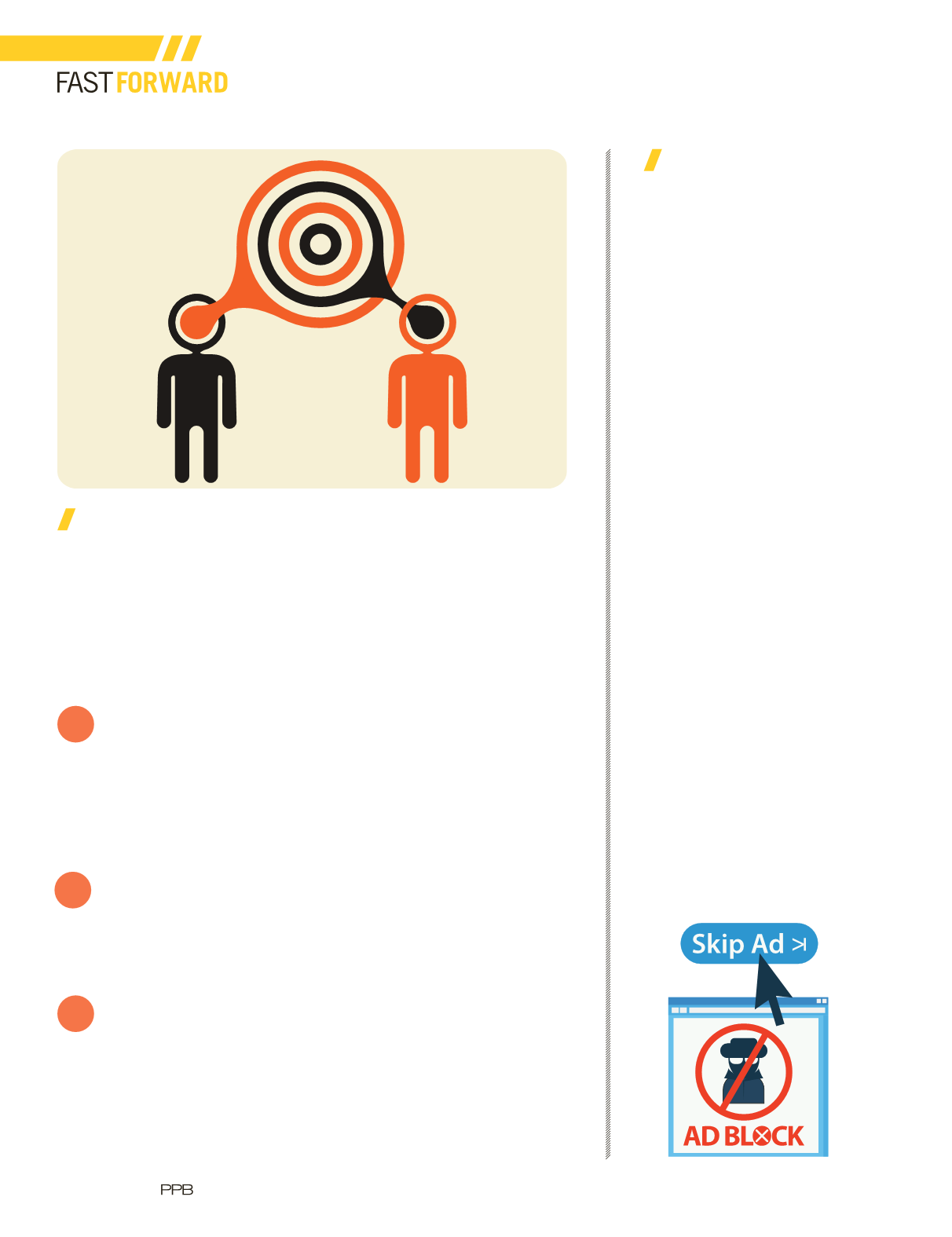

68
|
JUNE 2017
|
THINK
WATER COOLER
Convincing Conversations
Learn to be persuasive, not pushy, when trying to win someone over.
Whether you need buy-in from bosses on a new idea, or you just need customers to buy
more of your product, these three simple guidelines from DriveTime General Manager David
Brennan can help you become more persuasive without coming across as pushy.
Be Knowledgeable
Persuasive people are invested in their argument; well-thought out pitches are
backed by knowledge and a true understanding of what’s at stake—as well as what’s
possible. Educate yourself on the value, cost and other elements of what you’re trying to
pitch. Seek out the holes in your proposal and patch them up before you present. It’s equally
important to buy into your own idea; audiences can tell when someone doesn’t believe in
what they’re selling.
Be A Better Listener
To be better heard, you must become better at hearing your audience. Listening
helps build trust, which in turn leads to audiences becoming more open to your pitch.
It’s not passive listening, though. Reflective listening enables you to recognize and repeat
concerns, questions and thoughts, and to show that you can provide the desired solution.
Be A Problem Solver
The insights you gain from reflective listening set you up to become the problem
solver. Once you identify the audience’s biggest challenge, frame yourself as the most
qualified person to eliminate the problem. Is the client concerned about going over
budget? Explain how your solution saves them money or tracks spending in real time. Is
corporate buy-in a concern? Show your bosses that the program you want to implement
is designed to reward employees for participation. Communicate your solution in the
language of your audience, and they’ll more clearly see how it will benefit them.
AD-ITIVES
The Enemy
Of My Enemy
Google is adding an ad
blocker … what will its
advertisers think?
Why would an online company thumb
its nose at its greatest revenue earners?
That’s what tech experts are asking
about Google and its decision to build
an ad blocker for desktop and mobile
versions of Google Chrome.
While the company reportedly
earned upwards of $20 billion in
ad revenue in 2016, Chrome users
are among the legions who are
sick of online ads—ad blockers
are downloaded from the Chrome
Web Store by millions of users;
AdBlock and AdBlock Plus are the
most popular.
Though Google hasn’t revealed
which specific ads will be blocked by
the extension, the effort is aimed at
reducing pop-ups, pre-load landing
pages and auto-playing ads that
feature sound. The theory is that if
users are happy with the ads that are
showing up, they’ll be more likely to
continue using Chrome as a browser,
and less likely to block ads on their
own. In addition, advertisers may be
more inclined to develop online ads
that are less intrusive.
1
2
3
















